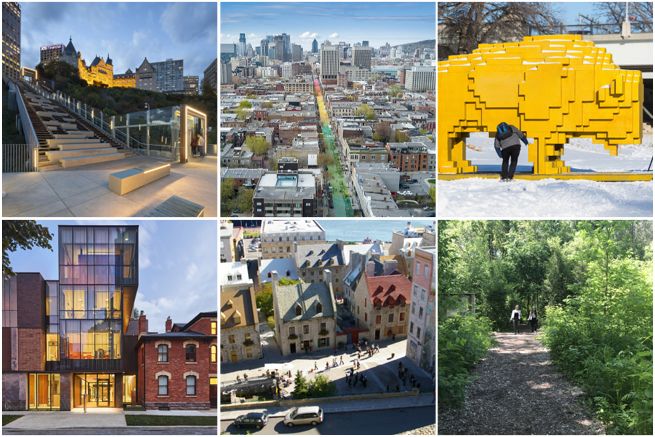

Urban design plays an important role in maintaining and enhancing the quality of life in Canadian communities.
The Royal Architectural Institute of Canada, Canadian Institute of Planners, and the Canadian Society of Landscape Architects—in cooperation with Canadian municipalities—work closely to promote awareness of that role. In 2006, the three organizations established the National Urban Design Awards program to recognize individuals, organizations, firms, and projects in Canada that have contributed to the quality of life and the sustainability of Canadian communities.
The National Urban Design Awards program encourages the submission of interdisciplinary and multidisciplinary projects involving planners, landscape architects, architects and/or other disciplines. The program recognizes the importance and impact of teams in creating places that enhance the quality of life in Canadian communities.
Categories
Up to 12 projects may be awarded a National Urban Design Award in any of the following categories:
Urban Design Plans Urban Fragments
Urban Architecture Community Initiatives Award
Civic Design Projects Student Projects
The next call for submissions will take place in 2027.
Mark your calendars and check back closer to the date for more information.
Terms of Reference - Updated September 2023
National Urban Design Awards 2022 Recipient Virtual Roundtable Event recording
This category is for a plan or study of a significant area that provides a development or redevelopment strategy for inspired urban transformation in the mid- to long-term. Urban design studies, master plans, redevelopment strategies, and community plans with the potential for significant impact on the community’s sustainability or development are eligible in this category.
This category is for a building, renovated building, or group of buildings of high architectural standard which achieves urban design excellence through its relationship with its immediate surroundings through its siting, massing, pedestrian amenities, environmental and social sustainability, and other contributions to the community.
This category is open to teams led by a registered architect.
This category is for civic improvement projects such as a park, public space, civil engineering or environmental infrastructure, street furniture, lighting, and other elements implemented as the result of an urban design plan or initiative.
This category is open to teams led by a registered design professional (architect, engineer, planner, or landscape architect).
4. Urban Fragments
This category is for other forms of built intervention that contribute to the beautification, sustainability, enjoyment, and appreciation of the urban environment. It includes enhancements to buildings, landscapes, or public spaces such as street furniture, lighting elements, interpretation media, memorials, public art, or other forms of intervention. Projects may be of a permanent or temporary nature.
5. Community Initiatives Award
This category is for any size of built project that was initiated or implemented by a community-based organization, and that has enhanced the public realm. Examples may include streetscaping, public art, commemorative or interpretive installations, and environmental initiatives.
In addition to the evaluation criteria listed above, for submissions in this category, the jurors will also consider community involvement, ie. demonstration of how the community-at-large was involved and supported the improvements.
6. Student Projects
Submissions may be made directly from individual students or groups of students enrolled in an accredited program in architecture, landscape architecture, and/or planning in the past two years. Such students and student groups may also be nominated by their schools to submit. Students and schools may forward submissions from studio or thesis projects with an emphasis on urban design.
The entry fee is waived for Student Projects.
Past recipients photos, from left to right: Mechanized River Valley Access, 18 Shades of Gay, The Warming Huts, Casey House, Intervention plan for the comfort and safety of pedestrians and cyclists in Old Québec City (Vieux-Québec), Corridor de biodiversité, Arrondissement de Saint-Laurent, Montréal



